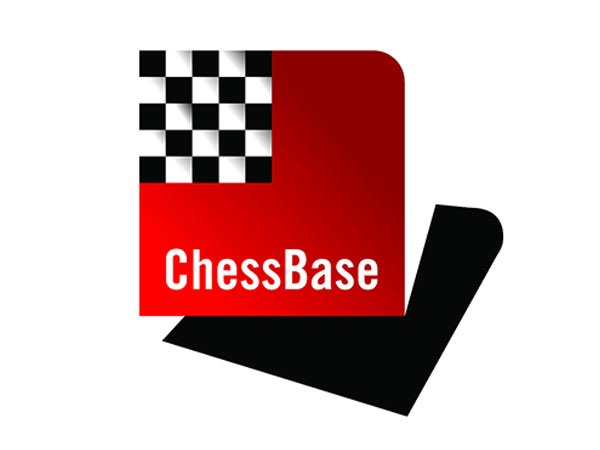The American
Continental Championship, which was staged in Buenos Aires from August
5–17, ended with a victory for Cuban GM Lázaro Bruzón.
Seven players tying for second – all experienced GMs, with one young
boy amongst them. He was 15-year-old Gastón Needleman, the reigning
champion of Mendoza Province in west Argentina, listed at Elo 2242 on the FIDE
rating scale, and 99th seed in the tournament.

Gastón Needleman, rising talent from Argentina
In the Continental Championship Gastón had played the tournament of
his life, defeating GMs like Ariel Sorín and Alexander Shabalov, IMs
like Guillermo Soppe und Yuniesky Quezada, and drawing Gata Kamsky and Darcy
Lima. In the end he had 8/11 points, with a 2655 performance. Naturally he
was the absolute crowd favourite.

Gastón Needleman (right) in his final round game against world-class
Gata Kamsky
We need to remind you that FIDE had promised the top seven players from this
event free tickets to the FIDE World Cup. This is the knock-out tournament
that previously produced the FIDE world champion (Khalifman, Anand, Ponomariov,
Kasimdzhanov), but in future will serve as one of the qualifiers for the classical
chess FIDE World Championship. Here are full
details of the cycle.

Gastón playing Cuban GM Yuniesky Quezada, whom he defeated. Among
the spectators is Argentinian master Francisco Benko, 95 years old.
Unfortunately there were seven players tied for second and only six places
on the FIDE invitation list (Lázaro Bruzón had got his ticket
by winning the tournament). The seven contenders were Julio Granda, 2601, Alexander
Onischuk, 2628, Gilberto Milos, 2606, Gata Kamsky, 2700, Ruben Felgaer, 2618,
Giovanni Vescovi, 2640, Gaston Needleman, 2242. A tiebreak was needed to decide
who would get the tickets – actually which player would be left out.

Gata Kamsky vs Gastón Needleman (foreground right) in the round
robin playoff
Now came the distressing part, which is described very passionately a report
by Carlos A. Ilardo, a journalist for the Argentinian newspaper “La
Nación“. We bring you a full translation with the permission of
the author. All pictures in our report were also supplied by him.
Before the somewhat dramatized account that follows, a quick update. In a brief conversation with young Gastón he said he didn't believe there was any conspiracy against him. We also found out from him that the progression of the tiebreak tournament makes any such collusion very unlikely. Needleman had the bye in the first round and beat Milos in the second round while Felgaer lost to Granda. It would have been crazy to agree to short draws while behind. Gastón added that Kamsky and Granda played a full game at the start. We thank him for his honesty and congratulate him on his tremendous result.
Checkmate for great aspirations
With a forced smile and a determination not to surrender to the humiliation,
young Mendocino Gastón Needleman came down the stairs of the Chess
Club Argentino, humming softly. With heavy hearts he and his father Alejandro
crossed the Avenida Callao in the early hours of the morning. Behind them
five hours of an uneven struggle which was an embarrassment to the spirit
of the event. It was a grotesque that destroyed the dreams of the boy to
play in the FIDE World Cup qualifier next year. A checkmate for great aspirations.
Gastón Needleman, the big discovery of the Campeonato Continental,
knew that his attempt to make one of the six places available for the World
Cup was like climbing a greased pole. But he never expected his GM opponents,
with the exception of his compatriot Rubén Felgaer, to actually come
up with such an insidious plan to gang up against the weakest player. But
this is what happened.
The tiebreak tournament was arranged as a seven round all-play-all semi-rapid,
to be played at the rate of 15 minutes + 10 seconds, with five minutes between
games. The event was moved from the original venue to the Club Argentino.
The well-known GMs and the attractive rapid chess format encouraged around
80 spectators to gather in the local chess club just before midnight.
The hopes of the promising Gastón were just a short dream, lasting
for as long as a sigh. The foreign GMs Granda (Peru), Kamsky and Onischuk
(USA) and the Brasilians Vescovi and especially Milos, who was very upset
at losing his game against the boy from Mendoza, shamefully agreed to draws
amongst themselves. They would play just three or four moves against each
other, while they would use up their entire thinking time against Needleman,
in order to exhaust the resistance of the Mendocino boy.
In this was the Grandmasters were able to rest, while young Gastón
had to maintain all kinds of defences and castlings, based on his talent
and intuition ["el pequeño Gastón sostenía defensas
y enroques sobre la base de su talento e intuición"]. After half
an hour of play and hardly five minutes of rest Needleman had to return to
the board to face a new, well-rested rival, who had another exhausting struggle
in store for him.
Only Rubén Felgaer fought for every point in every game, but did
not get them all. The spectators became very restless and started booing
and whistling at the players. Some of the GMs turned red and stammered excuses.
All the while Gastón had to resign, once, twice, three times. They
killed his aspirations. We can only hope that he will not have to pay for
his efforts in solitude. He deserves another opportunity to play in the World
Cup.
By Carlos A. Ilardo
For LA NACION
Final standings
| No |
Name |
1 |
2 |
3 |
4 |
5 |
6 |
7 |
Pts |
| 1 |
GRANDA, Julio |
|
½ |
½ |
1 |
½ |
½ |
1 |
4 |
| 2 |
KAMSKY, Gata |
½ |
|
½ |
½ |
½ |
½ |
1 |
3.5 |
| 3 |
VESCOVI, Giovanni |
½ |
½ |
|
½ |
½ |
½ |
1 |
3.5 |
| 4 |
FELGAER, Ruben |
0 |
½ |
½ |
|
½ |
½ |
1 |
3 |
| 5 |
ONISCHUK, Alexander |
½ |
½ |
½ |
½ |
|
½ |
½ |
3 |
| 6 |
MILOS, Gilberto |
½ |
½ |
½ |
½ |
½ |
|
0 |
2.5 |
| 7 |
NEEDLEMAN, Gaston |
0 |
0 |
0 |
0 |
½ |
1 |
|
1.5 |
As you can see, apart from Needleman's games there was only one decided encounter
in the entire tournament. In the second round Granda beat Felgaer, who was forced to play to win after that. We
would have liked to present the games themselves, but there where no sensor
boards available in the Club Argentino and the games were apparently not recorded.
Even the spectators were not able to follow the games properly. If anyone has
access to the gamescores we would be pleased to receive them.
Links
























